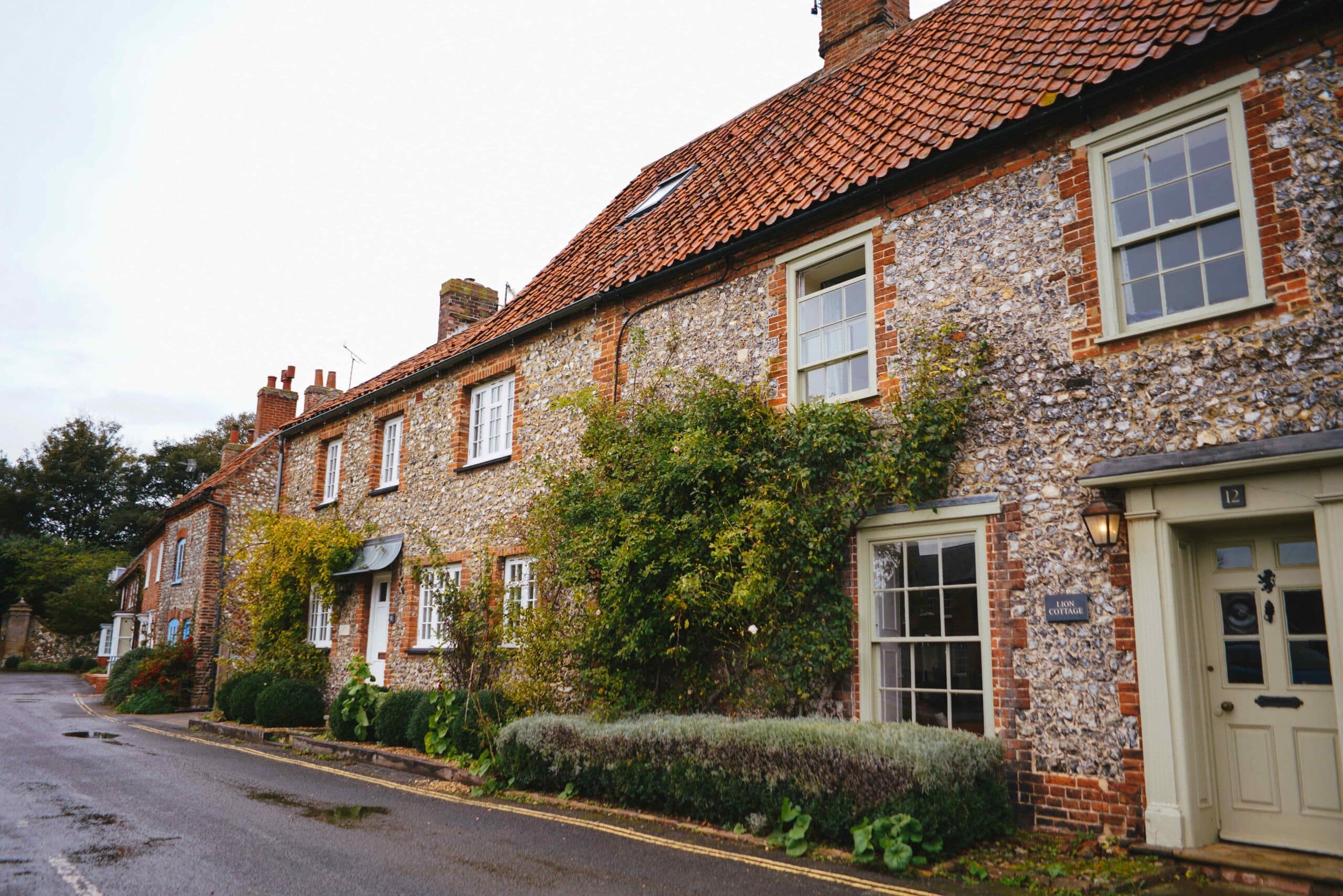Ramsbottom: 3 reasons to pack your bags and move here!
At Pearson Ferrier, we’ve dedicated over a quarter of a century to helping families discover their ideal homes in the uniquely charming town of ...

Do all first-time home buyers feel out of their depth? Maybe!
Deciding to get onto the property ladder and buy your first property can be a daunting experience. With so many factors to consider, from saving for a realistic deposit, seeking mortgage advice and finding your dream property – if you’re feeling a little overwhelmed, don’t panic, because you’re not alone.
Here at Pearson Ferrier, we’ve over twenty-five years of experience buying and selling properties with our clients, meaning you couldn’t be in better hands. We’ve developed this quick, comprehensive first-time home buyers guide to help you buy your dream home.
It’s no secret that saving for a deposit can often feel like the biggest obstacle to getting onto the property ladder, and for a good reason. Your deposit is likely to be the largest sum of money you’ll pay during your moving process, so it could feel difficult to save for. But, by setting yourself realistic goals and assessing your general outgoings and finances, you should be able to get a successful savings plan together.
Typically, you’ll need to save at least 10-15% of the cost of your first home, but it’s important to remember that with deposits, the bigger, the better. Having a larger deposit means you’ll need to borrow less for your mortgage, which usually means you’ll be able to get a better deal (i.e. your repayments will be smaller, and your interest is likely to be lower).
Did you know? A third of first-time home buyers receive financial help from family members when saving for a deposit!
Again, it’s easy to feel overwhelmed by all the different types of mortgages and all of the associated jargon and abbreviations. Here, we’ve provided a brief breakdown of the different types of mortgages for your overview:
Fixed mortgage – The most common type of mortgage. You’ll pay a fixed rate each month, no matter what happens relating to interest rates. Usually, these mortgages are fixed for a couple of years before you switch to a Standard Variable Rate (SVR). At this point, many people choose to remortgage to maintain a fixed rate.
Interest-only mortgage – This is a much rarer type of mortgage and is almost exclusively used for Buy to Let properties. In these circumstances, your monthly payments will only pay off the interest, rather than the loan itself. A condition for interest-only mortgages is that you’ll have to demonstrate how you’ll eventually pay off the loan.
Variable mortgage (Tracker) – For these mortgages, the payment varies with the interest rate as determined by the Bank of England.
Variable mortgage (Standard Variable Rate) – Meanwhile, for these mortgages, the payment varies based on the lender’s own internal systems and rates.
Discount mortgage – If you opt for a discount mortgage, there will be a fixed and discounted rate each month to begin with, before your rate reverts to an SVR mortgage. It is important to note whether this actually does work out cheaper for you in the long run, or not.
As a first-time home buyer, it’s entirely normal for mortgages to appear confusing or a little intimidating. Generally speaking, we would always advise seeking professional mortgage advice. A mortgage advisor can help you understand the difference between the different types of mortgages, and recommend the best option for your specific circumstances.
As it stands, you do not necessarily need to get pre-approved for a mortgage before you begin your house-hunting journey. However, getting a mortgage pre-approval can make it easier for you when it comes to securing your dream home.
A mortgage pre-approval is a statement from a lender that indicates how much they are willing to lend you, based on your current financial circumstances. They will typically look at your income, credit history, assets, employment history and tax score before assessing your eligibility for a mortgage.
A mortgage pre-approval can give you an idea of what kind of properties you can afford, as well as make you a more attractive buyer to sellers, as they’ll see that you have already taken steps to secure adequate financing.
It’s important to note that a mortgage pre-approval is not a guarantee of a mortgage, and you will still need to complete the full application process once you have found your perfect property.
Once you’ve got your finances and savings in order, it’s time for the exciting part to kick off. House hunting can be an exciting yet simultaneously overwhelming experience for many. The key is to be clear about what you want and what you can realistically afford.
Helpful tip: Many first-time home buyers find it helpful to make a list of ‘must-haves’ and ‘nice-to-haves’ – allowing them to compromise on certain things.
Here at Pearson Ferrier, we have an extensive portfolio of properties across Greater Manchester – making us an ideal one-stop-shop for finding the perfect property for you. Whether you’re looking for a one-bedroom apartment, the perfect family starter home, or a higher-end luxury property – we’ve got you covered.
We always advise taking your time when viewing houses, getting a feel for several different types of properties and locations, making use of virtual tours, and never rushing into making a decision. If you’re curious about our tips to find a property with potential, check out our previous blog post here!
Once you’ve found the perfect property for you, the next step is to make an offer. Your estate agent will help you submit an offer to the seller, which will typically include the price you’re willing to pay for the property.
Your offer may also include any additional buying conditions you may have, for example, a specific completion date, having any repairs carried out prior to completing the purchase etc.
The seller may either accept, reject, or counter your offer. Be prepared to negotiate, and always feel free to walk away if the terms and conditions are not right for you.
Helpful tip: The waiting game can often be an anxiety-inducing experience for many first-time home buyers – but try and remain positive. Remember, as a first-time buyer, you’re usually at an advantage over others, as the seller will know you don’t have to sell your property first – making you a safe bet.
If your offer has been accepted, it’s time to begin the legal process of buying the property. It’s important to remember that at this stage, neither you or the seller is legally bound to complete the sale. So whilst it’s important to remain optimistic, do be prepared that the seller could pull out of the sale if they wanted to.
At this stage of the process, you will need to do the following:
Once the survey results have come back and you’ve settled any potential issues, it’s time for the wheels to begin turning and legally purchase the property.
At this point, you’ll need to ensure you arrange the following:
Now that the move is definitely going ahead, it’s time to get ready for action. You can begin seriously packing your belongings, making purchases and preparations for move-in day and formally changing your address.
Helpful tip: Consider changing your address at
You may also want to get in touch with your new utility providers before your official move-in day, to help make the transition and moving process as stress-free as possible.
On completion day, you’ll receive the keys to your new property and can officially begin moving into your new home.
Whilst this is an exciting time – you’re likely to be very busy and very tired. Consider the small things, such as packing an ‘essentials bag’ for everything you’ll need for that day, making sure you’ve got easy options for food and keeping your important documents all in one place.
Our biggest tip for this day? Kick back, take it easy and don’t feel the need to unpack everything straight away!
Whilst getting onto the property ladder can feel daunting for many, we hope this first-time home buyers guide has helped shed some light on what the next few months will look like for you.
Regardless of where you are in the first-time buyer journey, Pearson Ferrier are ready to help you find your dream first home. With over 25 years of experience in property, we’ve got an extensive portfolio of stunning properties across Bury, Ramsbottom, Radcliffe and the rest of Greater Manchester – and we can’t wait to hear from you!
Get in touch on 0161 764 4440 or by dropping us a message here!
